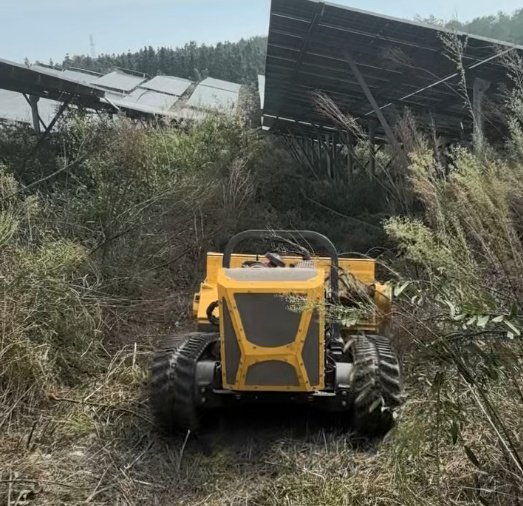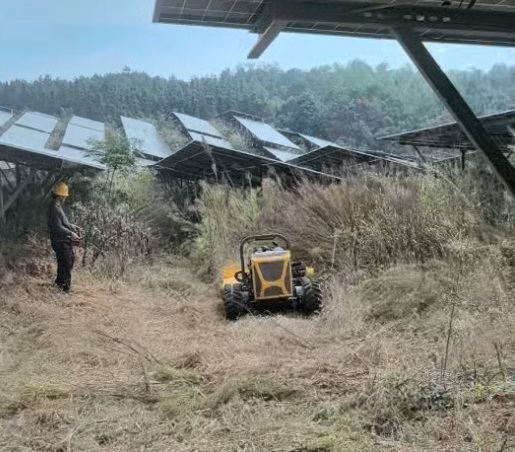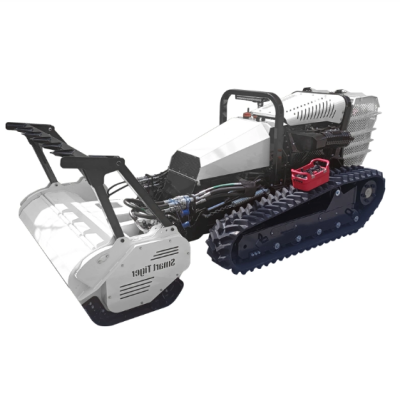Photovoltaic site mowing test run
Qingdao Huaying's Remote-Controlled Lawn Mower Completes On-Site Testing at a Large Domestic PV Power Station
Recently, the remote-controlled lawn mower developed by Qingdao Huaying Intelligent Equipment Co., Ltd. has successfully completed on-site testing at a large domestic photovoltaic (PV) power station.
Tailored to meet the weeding needs in the narrow spaces under PV panels and undulating terrain, the equipment achieves efficient and safe operation. It provides a new solution for vegetation management at PV power stations and has been highly recognized by the power station management.
This testing focused on addressing the core weeding pain points of PV power stations: the spacing between PV panel arrays is only 1.5-2.5 meters, making traditional manual weeding inefficient and large machinery unable to access; moreover, equipment operation must avoid colliding with PV brackets, requiring extremely high operational precision. The remote-controlled lawn mower deployed by Qingdao Huaying can easily navigate through the gaps between PV panels. Equipped with a 150-meter long-distance wireless control system, operators can monitor the operation status in real time from a safe area and accurately avoid obstacles such as brackets.
Test data shows that the equipment can cover an operation area of over 5,000 square meters per hour, which is 8-10 times more efficient than manual weeding. Additionally, its cutting height can be stably controlled between 3-8 cm, effectively preventing weeds from shading PV panels and affecting power generation efficiency.
In recent years, the PV industry has developed rapidly, and the demand for vegetation management at power stations has grown increasingly. Qingdao Huaying has continuously optimized its products for new energy scenarios. The successful on-site testing at this PV power station marks a new breakthrough for the company’s equipment in the new energy supporting service field.
In the future, the company will continue to focus on the needs of segmented scenarios, develop intelligent equipment that better addresses industry pain points, and provide technical support for the efficient operation of new energy power stations such as PV and wind power.





